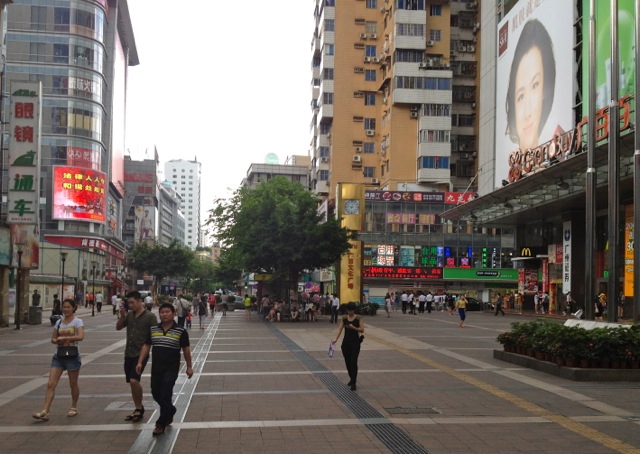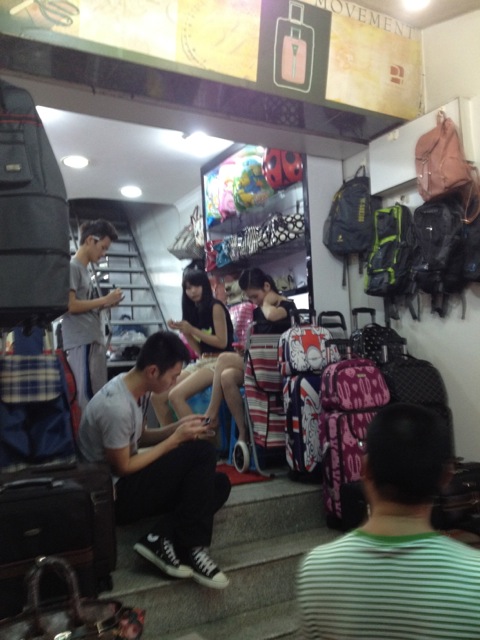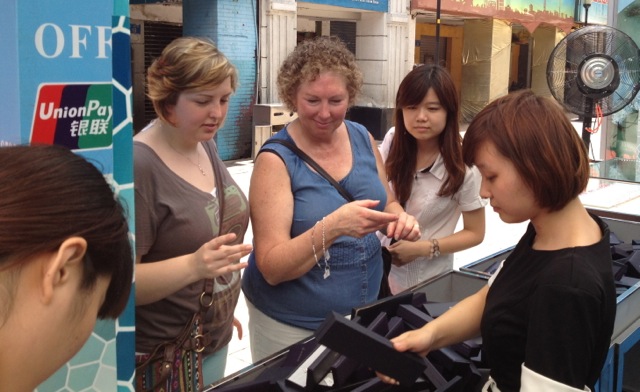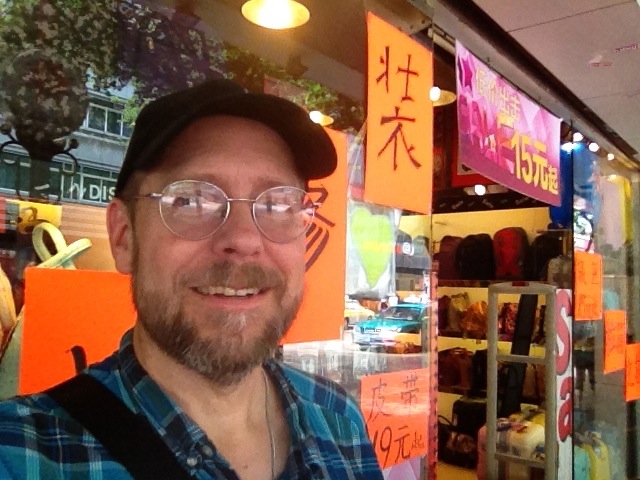When I was in my doctoral program at Arizona State, I took a course in the Sociology of Everyday Life, a class my wife has always lovingly referred to as the “Riding the Bus.” class. The central subject of the class was how people behave in routine situations, how we know that situations are routine, and how do we adapt when “everyday life” changes.
Let me tell you, nothing breaks you out of having an everyday life routine like traveling to China.
Take, for example, shopping. The market I’ve gone to several times for bottled water and snacks is about five or six blocks away from the hotel. On the first floor is a pretty predictable grocery store, bakery, and a section devoted to fine jewelry and watches. The main floor is not particularly big by my standards, but there’s an escalator headed up in the back. At the top of that escalator is a floor devoted to cooked, hot food with all the accompanying new smells.
Then there is another escalator heading up to another floor, this one devoted a wide range of household goods, toys, sporting goods, and the like. And then there is yet another escalator that takes you to a floor devoted to fashionable clothing and accessories. It almost was like a scene out of Harry Potter to me. Starting at the store front, I had no idea there was essentially a small Walmart hiding within.
On Tuesday, a group of us went shopping for gifts with the help of a local young lady who goes by Moonie. Moonie will be graduating tomorrow with a degree in business and finance as part of the 1-2-1 shared program between UNK and a university here in Guangzhou.
Moonie took us to a marketplace in the heart of the city that was definitely not targeted at tourists. In fact, the only non-Chinese people we saw all day were a young blond woman and a Middle Eastern gentleman with a white robe.
Within the marketplace, there are giant department stores, Western and Asian fast food joints, and little stalls where everything is negotiable. In these places, you are expected to negotiate the price for what you are buying, something that would have been complicated without Moonie, who is an expert at this. (Moonie confessed that she is at this marketplace most weekends.) Adding to the complications are that the currency is completely different from what I am familiar with. Trying to calculate prices in your head where 100 RMB equals roughly $20 plays with your head.
Here the shop where I bought my wife her present:
Along with Moonie and I were my UNK colleague Kim Schipporeit and her daughter Amanda. One of Kim and Amanda’s favorite stops was an outdoor costume jewelry spot covered by a freestanding awning where everything was priced 49 RMB:
By the end of the day I had scarves, shawls, jewelry, a tie and the perfect gift for my wife. I was ready to call it a day and have some mango ice cream. (The alternate choice was green tea and red bean.)




